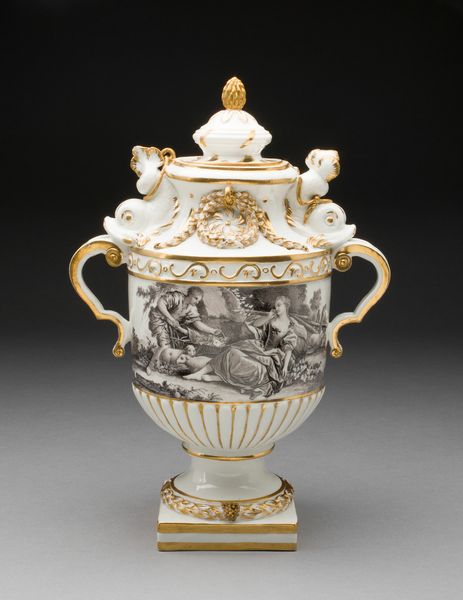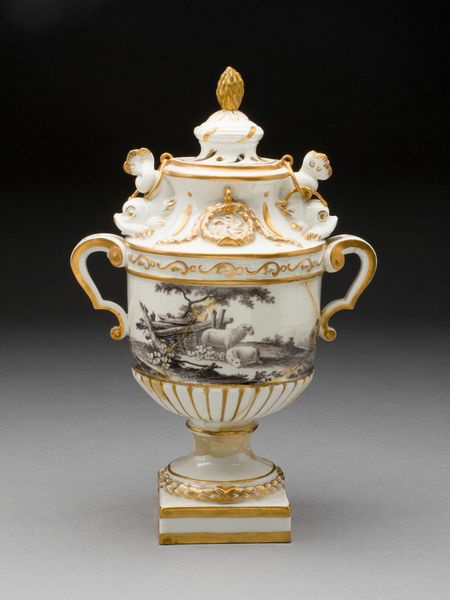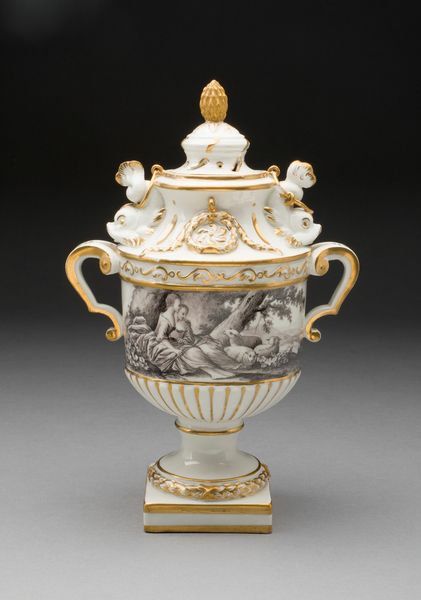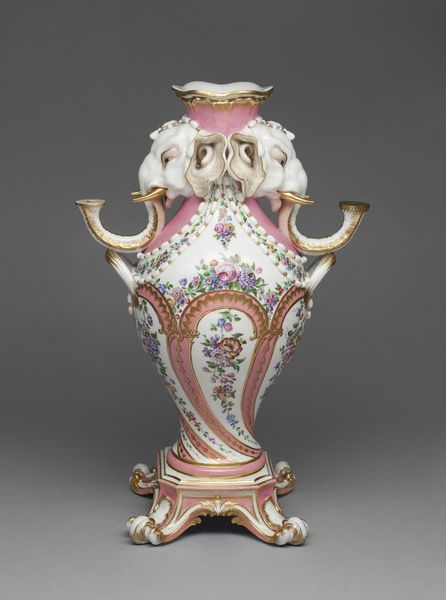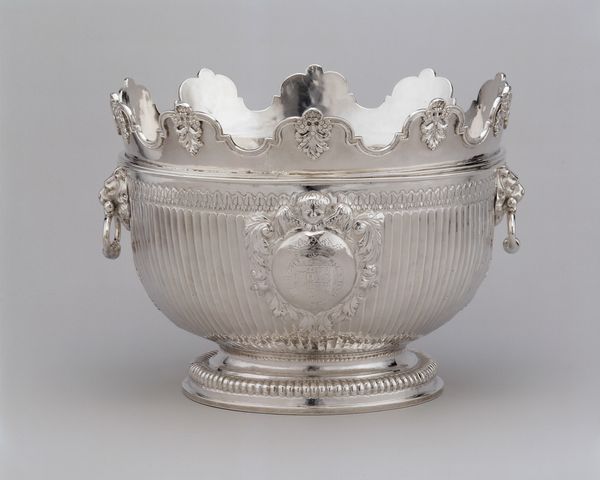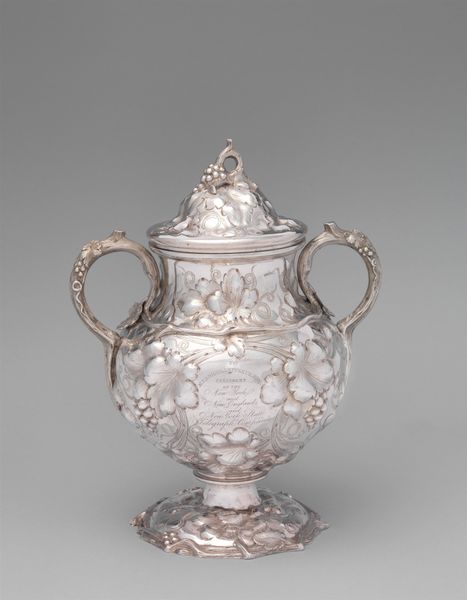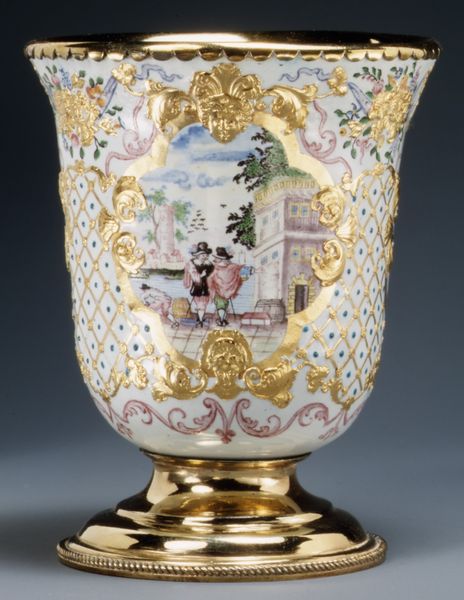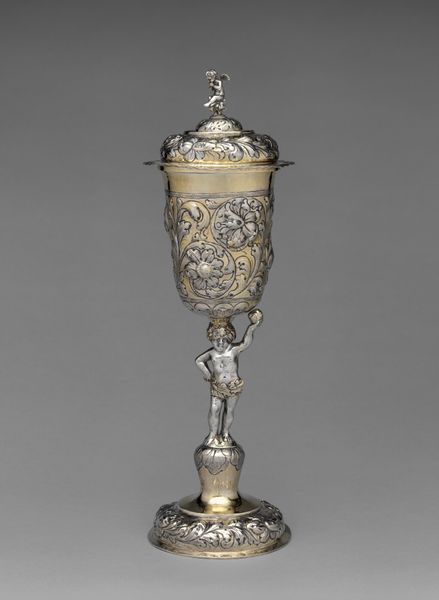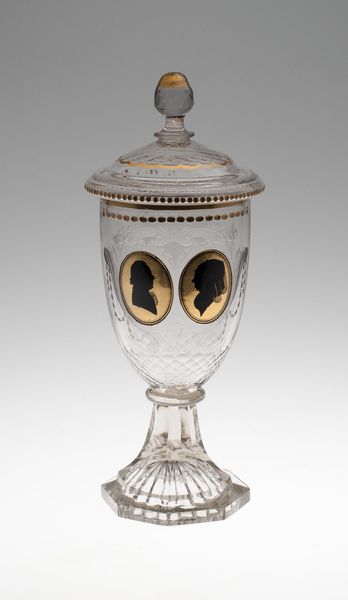
Dimensions: 38.1 × 21.6 × 16.5 cm (15 × 8 1/2 × 6 1/2 in.)
Copyright: Public Domain
Curator: Standing before us is a porcelain vase, created circa 1800 by the Fürstenberg Porcelain Factory. Its delicate craftsmanship and Neoclassical form are quite striking. Editor: It exudes a certain restrained elegance, doesn't it? The white porcelain with gilt accents lends it a regal, almost aristocratic air. I'm particularly drawn to its sense of formal control. Curator: Absolutely. Considering the period, the vase reflects the tastes and values of its elite consumers. We must acknowledge, though, the political dimensions, and how these objects acted as indicators of wealth and power, reinforcing social hierarchies of the era. How the decorative arts became such a key component in the assertion of national identity. Editor: That’s very insightful. Looking at the imagery, I notice the repetition of vase motifs. What does this choice suggest to you? It's vases all the way down! Curator: It’s a clever bit of visual play, isn’t it? Consider, what did vessels such as this, objects designed for holding and display, represent in the socio-cultural context? The home? Domesticity? Gender roles, perhaps? The elite drawing rooms these were likely found in were not simply stages for conspicuous display, but potent spaces where identities were actively shaped, reformed, and projected through strategic aesthetic choices. Editor: A fascinating perspective. So, not merely decorative, but a potent symbol of privilege and controlled representation. And now, viewing this piece through the lens of its eventual display within a modern museum, we might examine how its original meanings have been recontextualized, perhaps even sanitized to fit contemporary narratives around art and history. Curator: Exactly. Museums, you see, have a role to play in this evolving narrative, deciding what’s worthy of display, what stories are told. Thinking through a feminist perspective for a moment, for whom exactly has beauty like this historically been created? Editor: Indeed. Thank you, I have gained so much in understanding how it exists today because of historical narrative. Curator: A necessary element if one is to critique how value is currently constructed and projected within these very halls.
Comments
No comments
Be the first to comment and join the conversation on the ultimate creative platform.

